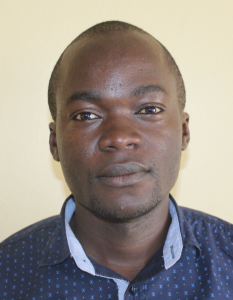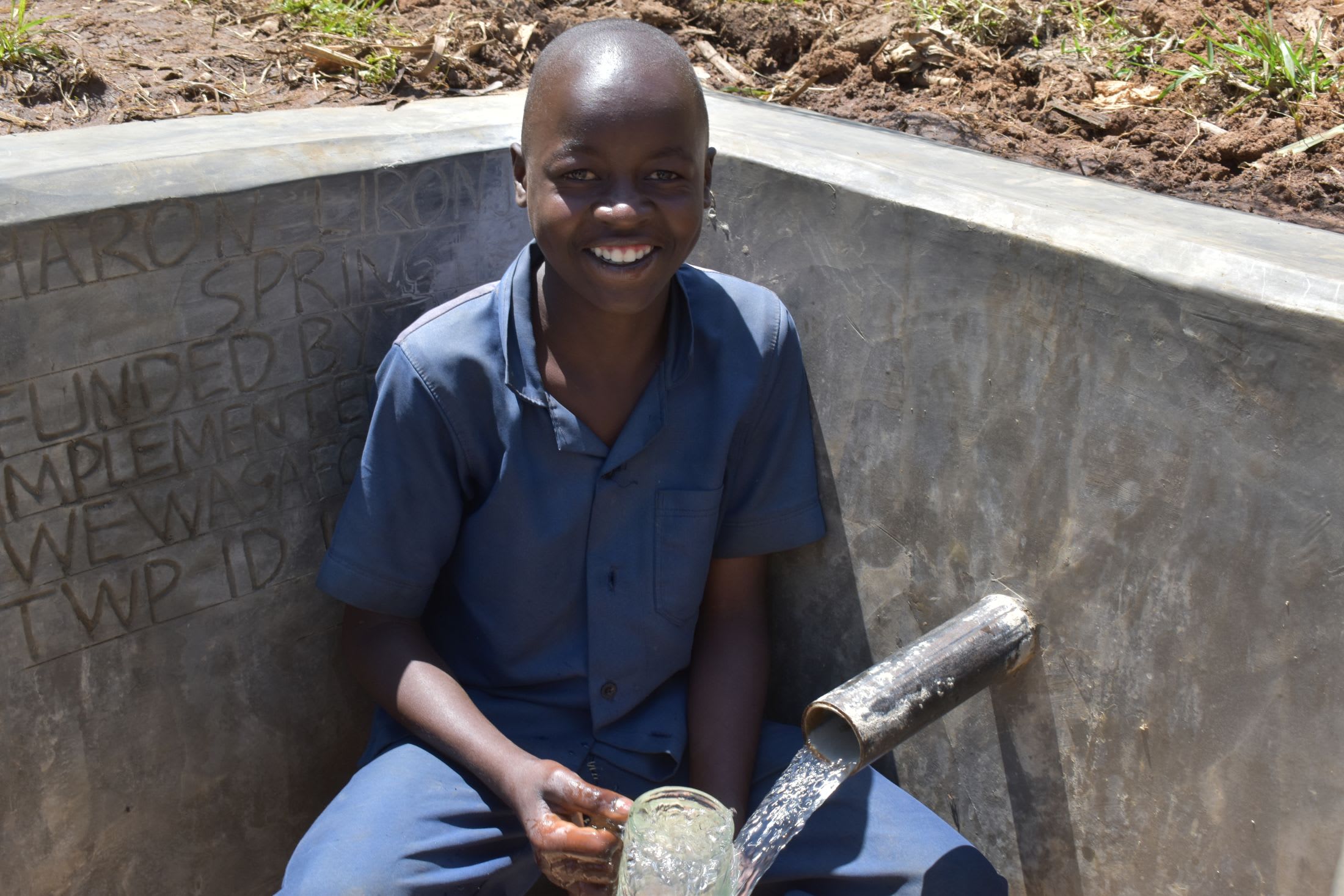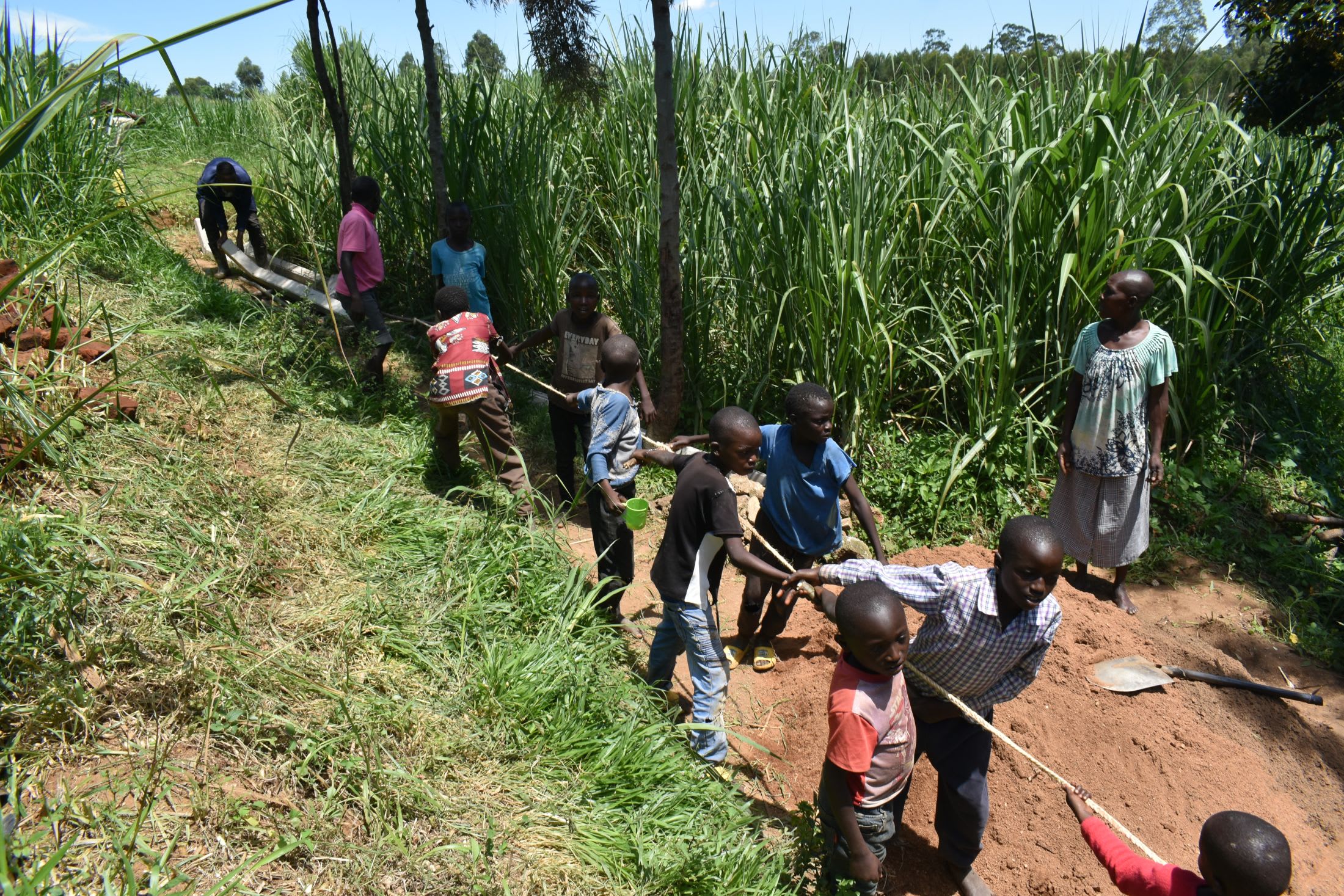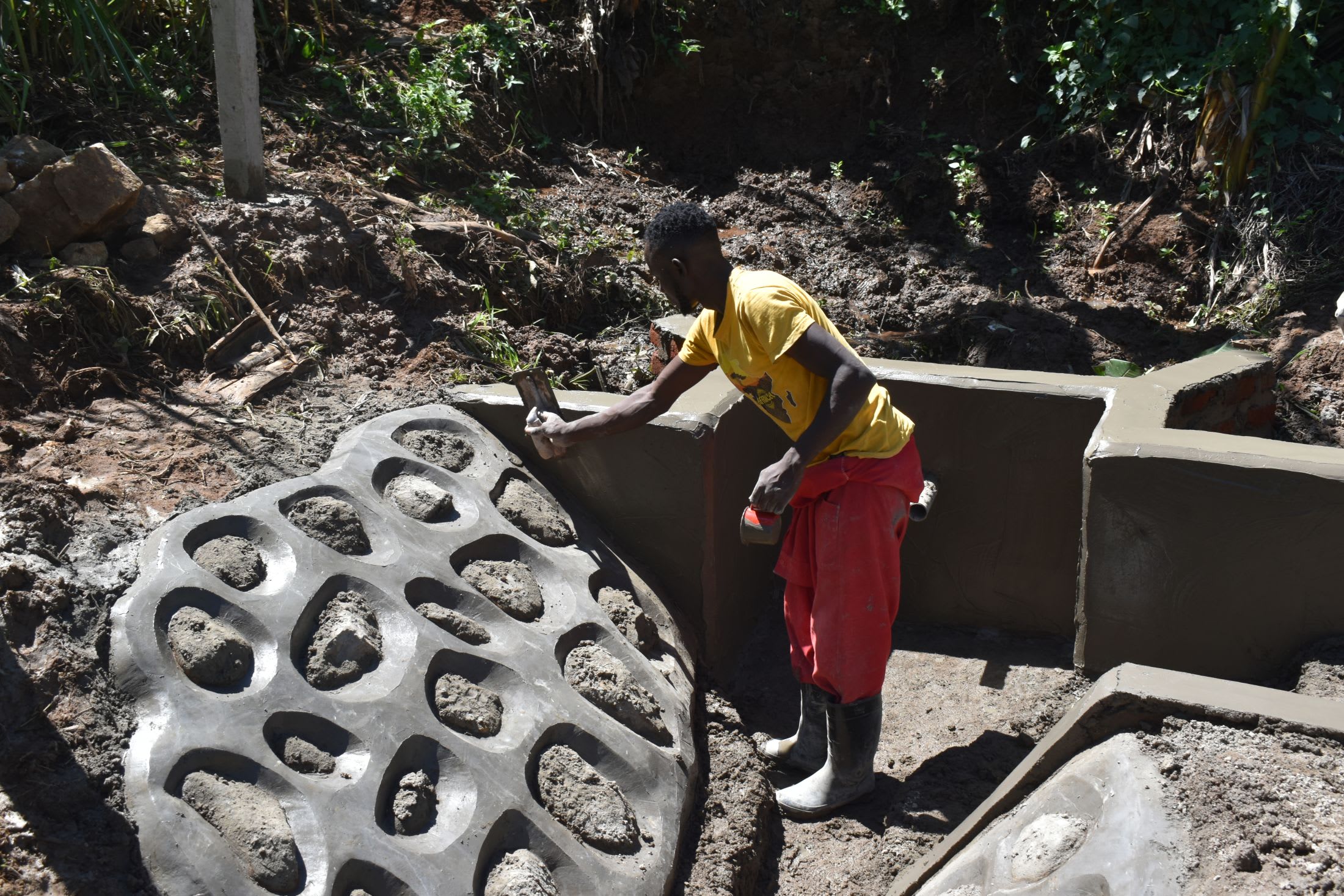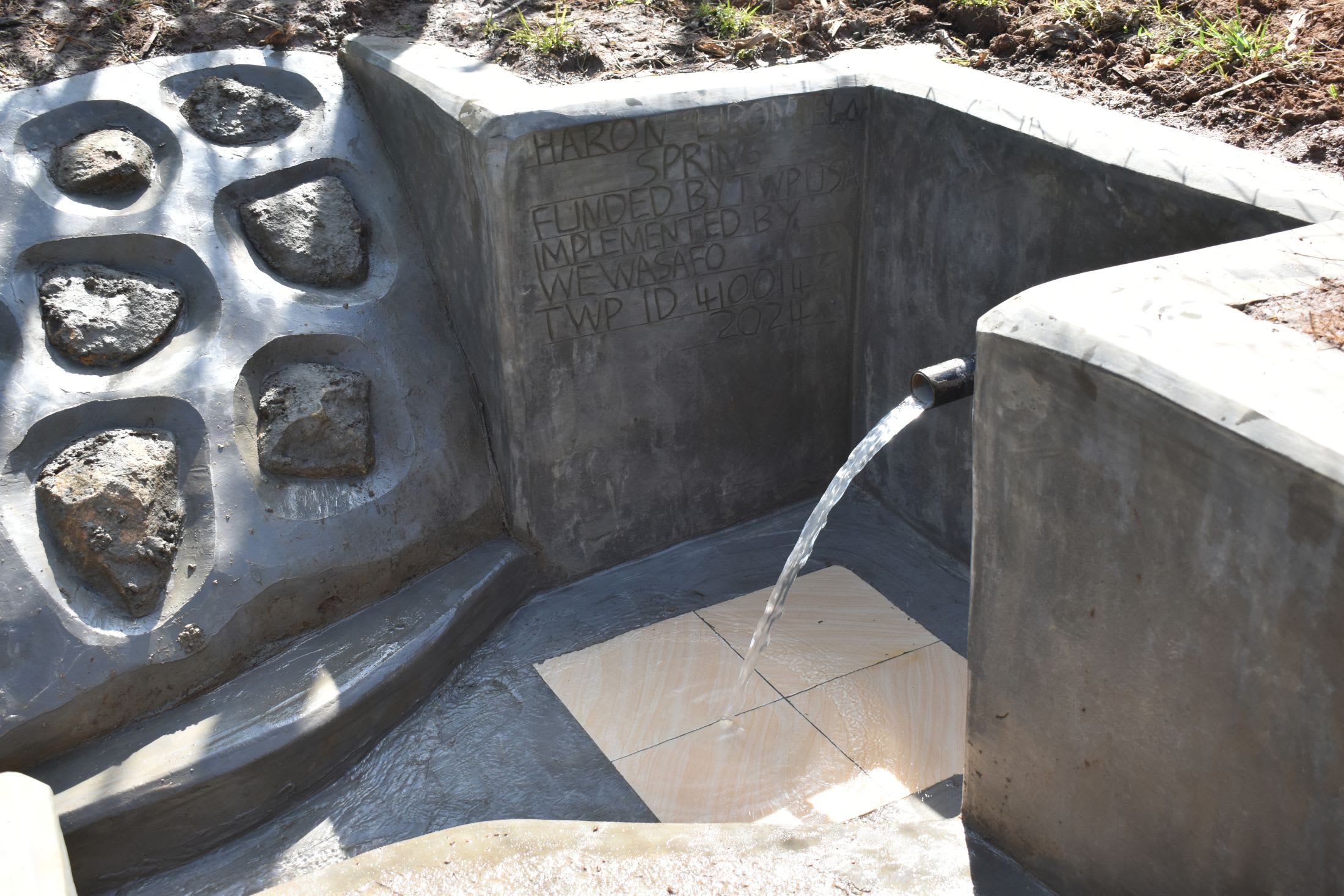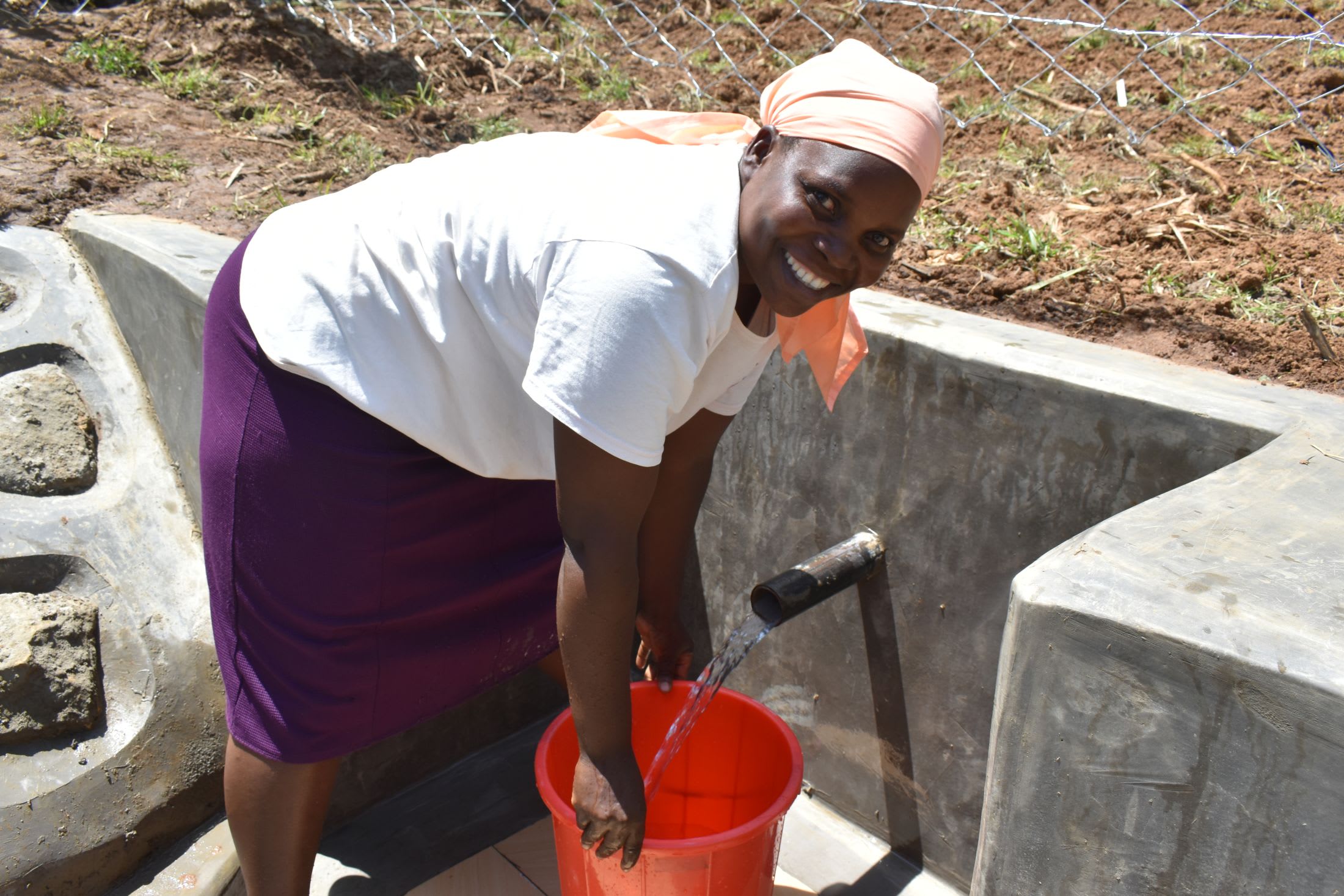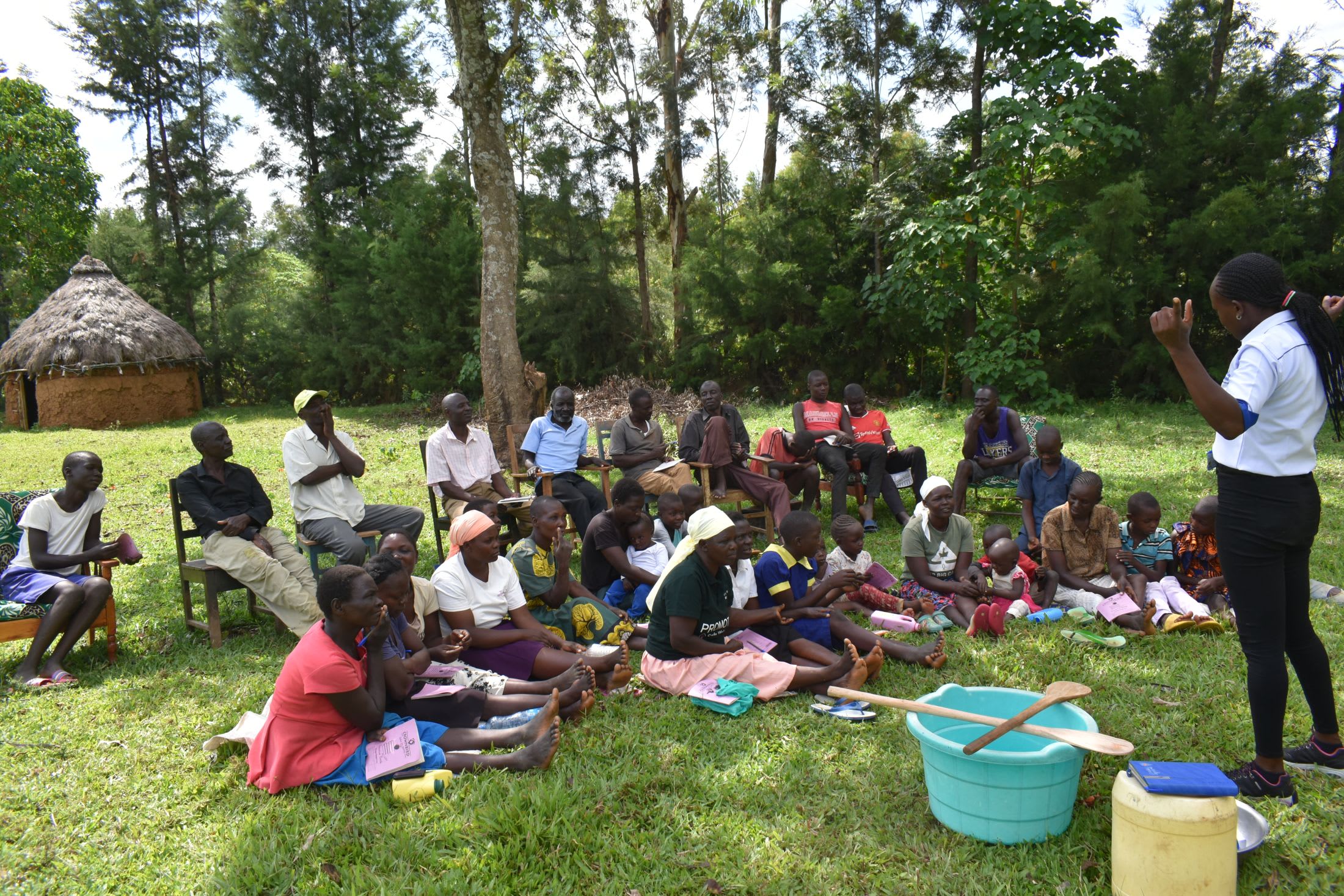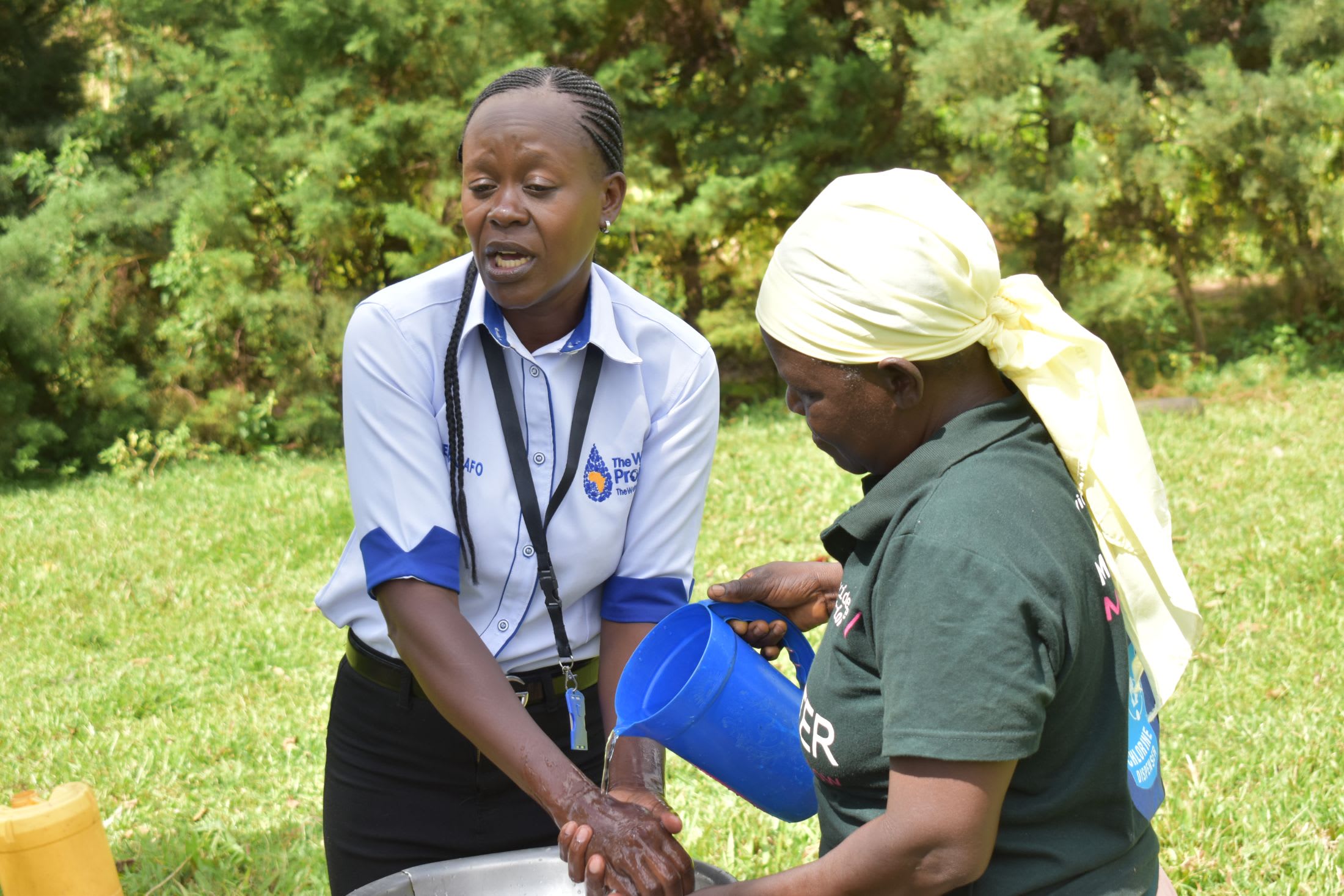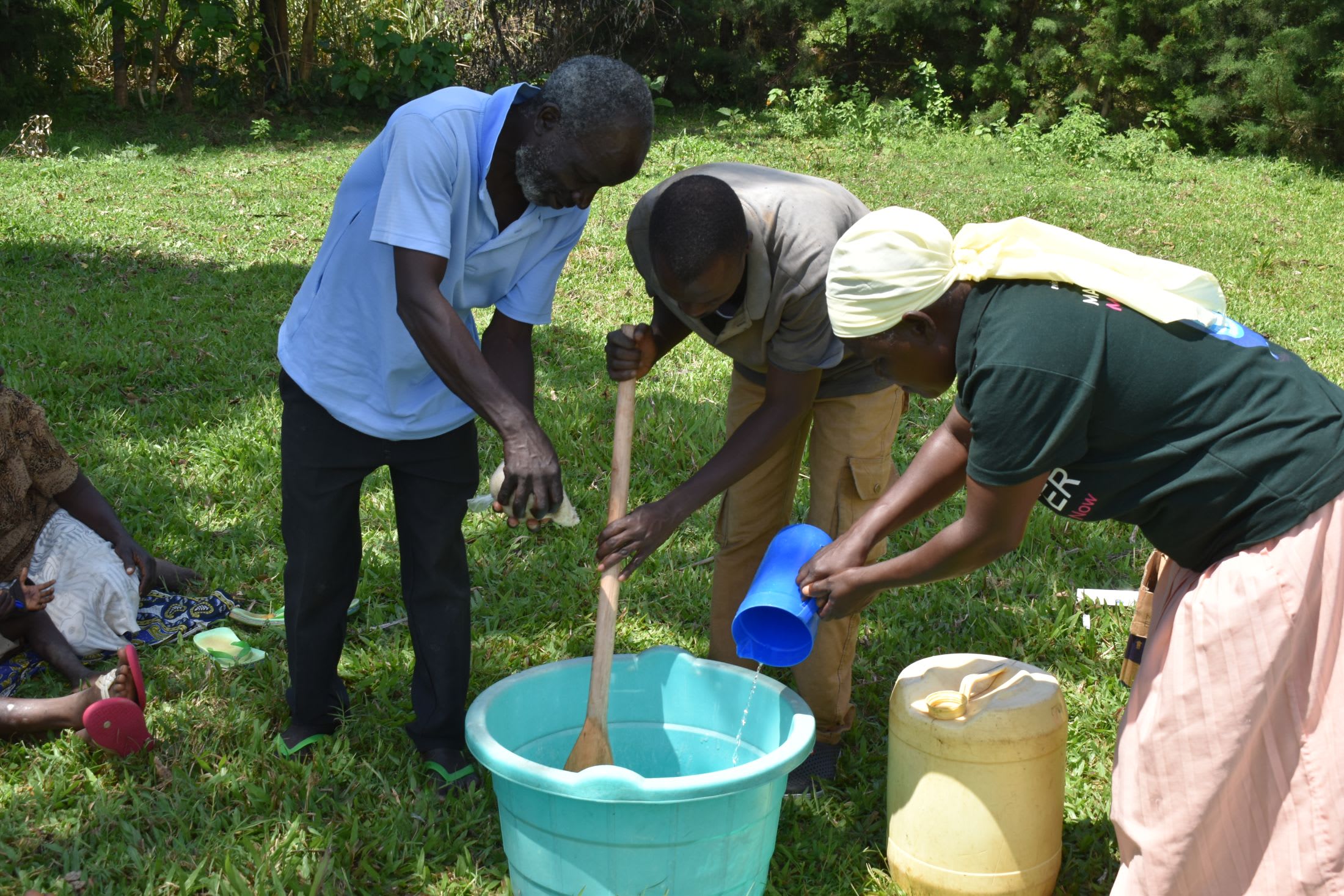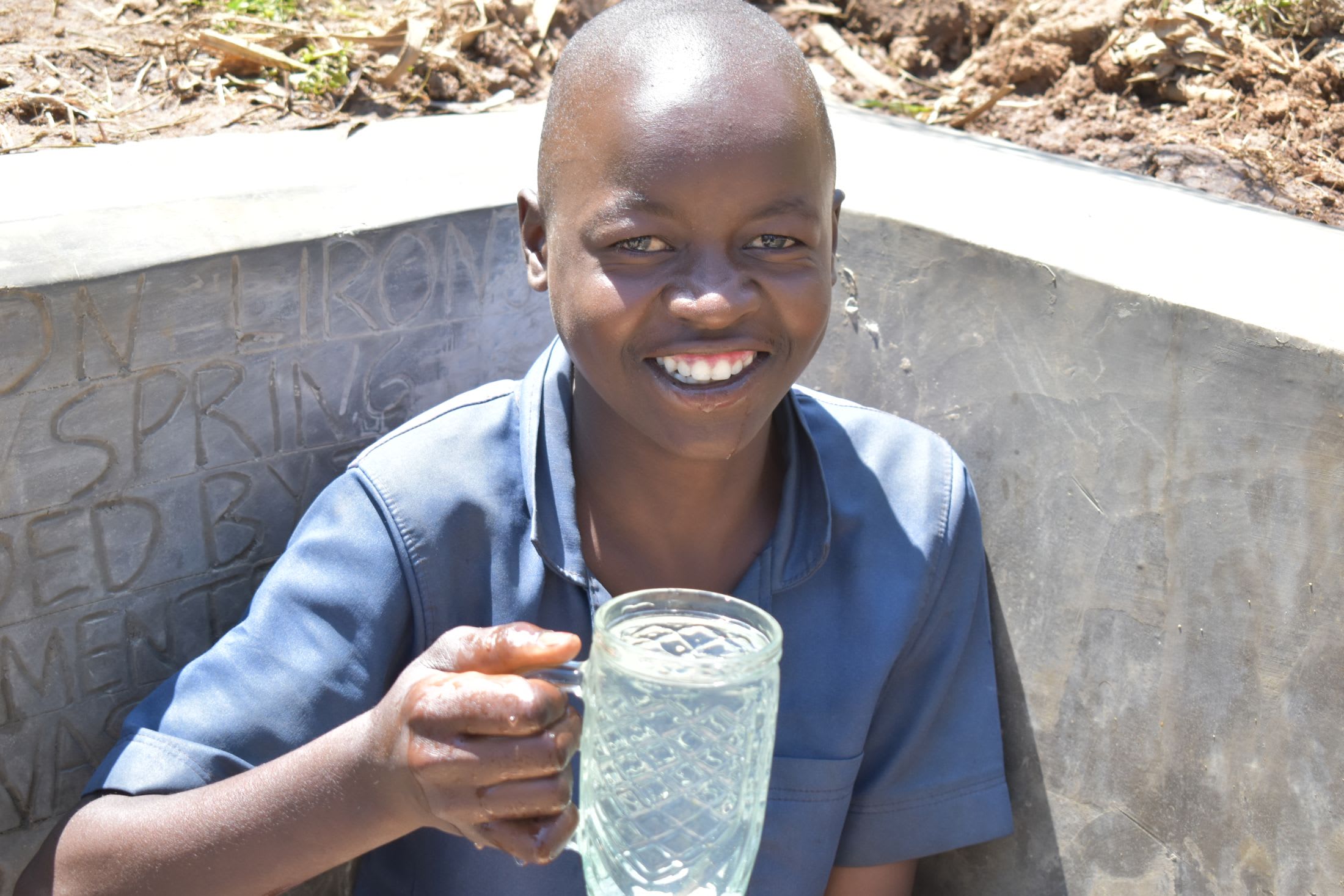The 224 community members of Chombeli North who drink from their unprotected spring are at risk of contracting waterborne illnesses. This community has no safe water option, making life dreary and lacking hope for many.

Our field officer Victor Musemi shared, "Time over time, we have really suffered due to unsafe water, which has affected our generation. People have been wasting much time queuing waiting to collect water, but due to its openness and frequent water collection, the source becomes muddy; thus, people have to wait for water to settle for them to fetch."
"All is not well for me; I have just recovered from sickness last month. Before we opened school, I was infected with waterborne diseases, which [have] really affected my academic calendar. This has caused me to [miss] syllabus coverage," said Algiers L., 13.
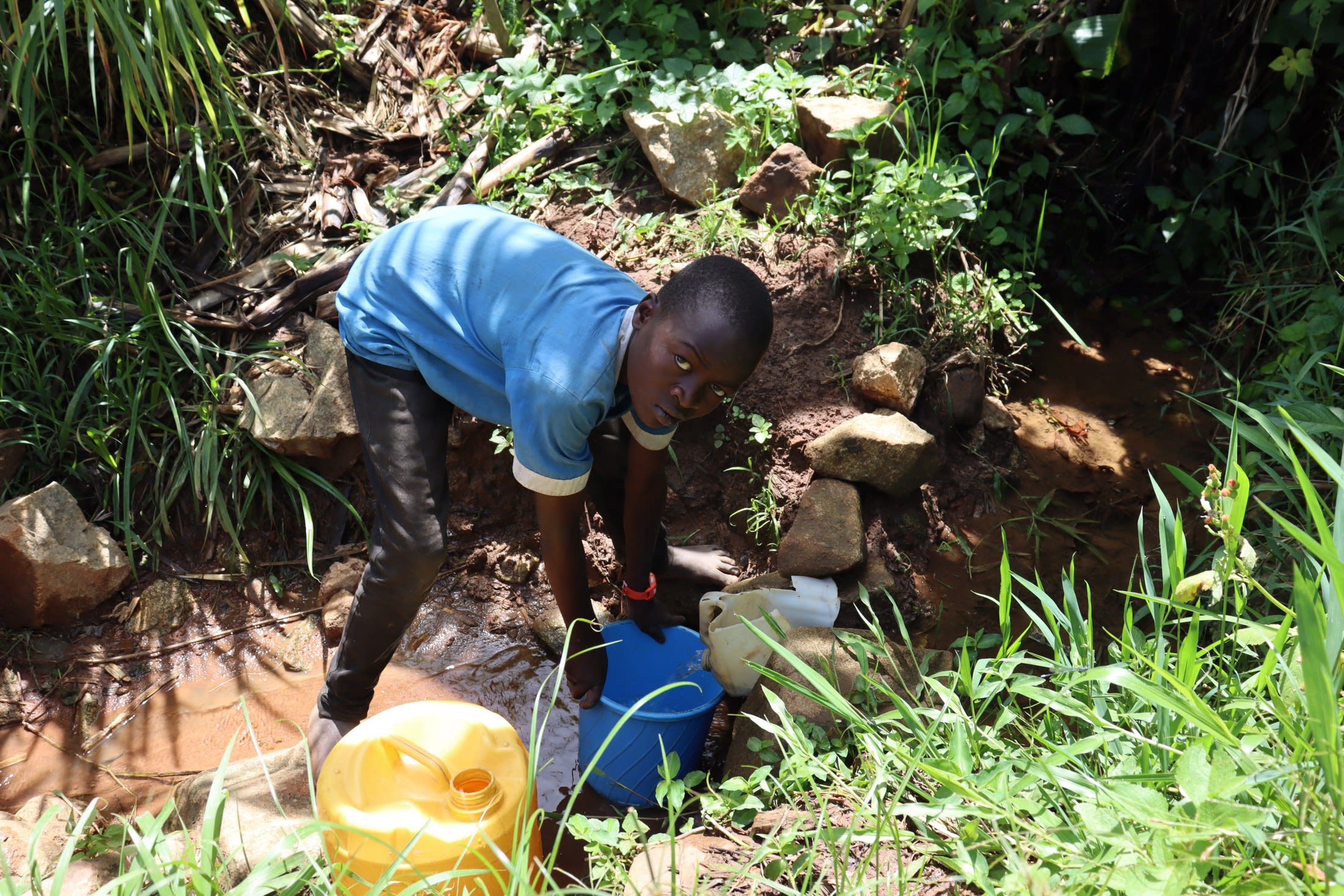 Algiers collecting water.
Algiers collecting water.
"Also, my parents have been affected financially due to medication and other transportation costs. The source is not safe for fetching water, especially during [the] rainy season, when the collection area overflows in [the] standing area," he continued.
To make matters worse, because the "pipe" is just a jug trying to direct the spring's eye, people must wait in long lines to collect the contaminated water.

"As a mother for a long time, I have experienced water challenges from this community. This has created a notion that mothers and daughters from this community don't know the importance of hygiene. For me personally, I have not been performing my duties on time, more so my children have been getting meals not on time, hence finishing homework at later hours," shared farmer Dorcus Nganasa, 40.
 Dorcus in her kitchen.
Dorcus in her kitchen.
Without enough water to even cook, hygiene is often put on the back burner of priorities. This is detrimental to everyone. Women and girls also feel that lack of menstrual hygiene puts them at risk for various health issues, including reproductive tract infections that make them more susceptible to HIV and AIDS.
Protecting the Chombeli spring will allow children like Algiers to attend school regularly, unencumbered by waterborne illnesses, and families like Dorcus' to prioritize their hygiene and other life-improving tasks.
The Proposed Solution, Determined Together...
At The Water Project, everyone has a part in conversations and solutions. We operate in transparency, believing it benefits everyone. We expect reliability from one another as well as our water solutions. Everyone involved makes this possible through hard work and dedication.
In a joint discovery process, community members determine their most advantageous water solution alongside our technical experts. Read more specifics about this solution on the What We're Building tab of this project page. Then, community members lend their support by collecting needed construction materials (sometimes for months ahead of time!), providing labor alongside our artisans, sheltering and feeding the builders, and supplying additional resources.
Water Access for Everyone
This water project is one piece in a large puzzle. In Kenya, Sierra Leone, and Uganda, we're working toward complete coverage of reliable, maintained water sources that guarantee public access now and in the future within a 30-minute round trip for each community, household, school, and health center. One day, we hope to report that this has been achieved!
Training on Health, Hygiene & More
With the community's input, we've identified topics where training will increase positive health outcomes at personal, household, and community levels. We'll coordinate with them to find the best training date. Some examples of what we train communities on are:
- Improved hygiene, health, and sanitation habits
- Safe water handling, storage & treatment
- Disease prevention and proper handwashing
- Income-generation
- Community leadership, governance, & election of a water committee
- Operation and maintenance of the water point
Chlorine Dispensers
Installing chlorine dispensers is an important piece of our spring protection projects. Protecting a spring provides community members with an improved water source, but it doesn’t prevent contamination once the water is collected and stored. For example, if the water is clean and the container is dirty, the water will become contaminated.
We ensure that each chlorine dispenser is filled with diluted chlorine on a consistent schedule so that people can add pre-measured drops to each container of water they collect. That way, community members can feel even more confident in the quality of their water.






 Protected Spring
Protected Spring
 Rehabilitation Project
Rehabilitation Project










